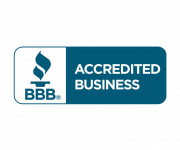INTRODUCTION
In today’s highly competitive digital landscape, businesses are increasingly seeking marketing strategies that deliver tangible and measurable results. Performance marketing is a powerful approach that enables businesses to drive growth while ensuring accountability, transparency, and a strong return on investment. In this blog, we will explore the concept of performance marketing, its key components, and how businesses can leverage this approach to achieve their marketing goals. Finally, we’ll conclude with insights from Social Know How to help you make the most of performance marketing.

UNDERSTANDING PERFORMANCE MARKETING
Performance marketing is a results-driven approach to digital marketing that focuses on driving specific actions, such as clicks, leads, or sales, rather than broader brand awareness. This approach shifts the risk from the advertiser to the publisher, as businesses only pay for the desired outcomes rather than impressions or reach. By leveraging data and analytics, performance marketing allows businesses to optimize their campaigns in real-time, ensuring that marketing budgets are allocated efficiently and deliver maximum ROI.
KEY COMPONENTS OF PERFORMANCE MARKETING
Pay-for-Performance Models
At the heart of performance marketing lies the concept of pay-for-performance, where businesses compensate publishers based on the results they generate. Common compensation models in performance marketing include:
1. Cost per Click (CPC): Businesses pay for each click generated by the publisher’s promotional efforts.
2. Cost per Action (CPA): Businesses pay when a specific action is completed, such as a lead submission or a sale.
3. Cost per Lead (CPL): Businesses pay for each qualified lead generated by the publisher.
4. Cost per Mille (CPM): Businesses pay for every 1,000 impressions of their ad, although this model is less common in performance marketing.
Data and Analytics
Performance marketing relies heavily on data and analytics to track, measure, and optimize campaign performance. By leveraging tools such as Google Analytics, Facebook Ads Manager, and various tracking platforms, businesses can gain insights into campaign performance, audience behavior, and conversion rates. This data-driven approach enables marketers to make informed decisions and continuously refine their strategies to maximize ROI.
Targeting and Segmentation
In performance marketing, the focus is on reaching the right audience with the right message at the right time. This involves leveraging data to segment the target audience based on demographics, interests, behaviors, and other factors. By tailoring campaigns to specific audience segments, businesses can drive better engagement, higher conversion rates, and increased ROI.
Channel Selection
Performance marketing campaigns can be executed across various channels, such as search, display, social media, email, and affiliate marketing. The choice of channels depends on the target audience, campaign objectives, and available resources. By selecting the most relevant and effective channels, businesses can maximize their reach and drive desired outcomes.
Creative and Messaging
The success of a performance marketing campaign also depends on the quality of the creative and messaging. Businesses must ensure that their ads are engaging, relevant, and tailored to the target audience. By testing different ad creatives, formats, and messaging, marketers can identify the most effective combinations and optimize their campaigns accordingly.

LEVERAGING PERFORMANCE MARKETING FOR BUSINESS GROWTH
Set Clear Goals and KPIs
Before launching a performance marketing campaign, it’s essential to define clear goals and Key Performance Indicators (KPIs) to measure success. This could include metrics such as the number of leads, sales, or clicks generated, the conversion rate, or the cost per acquisition (CPA).
Choose the Right Partners
Success in performance marketing often relies on the strength of the partnerships between businesses and publishers. Research and select partners that have experience in your industry, share your values, and can deliver the desired results. Establish clear expectations and maintain open communication to ensure a strong and successful working relationship.
Leverage Data and Technology
Invest in data collection, analysis, and reporting tools to gain valuable insights into campaign performance, audience behavior, and market trends. By leveraging data and technology, businesses can make informed decisions, optimize their strategies, and drive better results.
Test and Optimize
Performance marketing is an iterative process that requires continuous testing, learning, and optimization. Test different creative elements, targeting parameters, and bidding strategies to identify the most effective combinations. Analyze campaign performance regularly and make data-driven adjustments to maximize ROI.
Monitor Compliance and Adherence to Regulations
Ensure that your performance marketing campaigns adhere to industry regulations and best practices, such as data privacy, ad disclosure, and consumer protection guidelines. By maintaining compliance, businesses can build trust with their audience and avoid potential legal issues.
CONCLUSION
By understanding the key components of performance marketing and leveraging data, targeting, and optimization strategies, businesses can maximize their marketing efforts and achieve their goals.
Social Know How encourages businesses to embrace performance marketing as a critical part of their overall digital strategy. By setting clear goals, choosing the right partners, leveraging data and technology, and continuously testing and optimizing campaigns, businesses can unlock the full potential of performance marketing and drive sustainable growth. Partner with Social Know How to make the most of your performance marketing initiatives and stay ahead of the competition.





